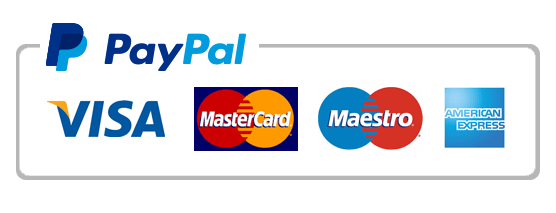Currently Empty: £0.00

The world of online education has exploded in recent years, offering countless opportunities for individuals to learn new skills, advance in their careers, or even make a career change. With so many online courses available across every field imaginable, it’s no surprise that selecting the right one can feel overwhelming. However, many people make common mistakes when choosing an online course that can hinder their educational journey.
In this blog, we will highlight the top five mistakes people make when choosing an online course and, most importantly, how to avoid them. Whether you’re a seasoned professional or just getting started, these tips will help you make the best choice for your education and career goals.
1. Mistake #1: Not Defining Your Learning Goals
One of the biggest mistakes people make when choosing an online course is failing to define their learning goals clearly. It’s easy to get caught up in the excitement of discovering a course that interests you or promises to teach you the skills you want to acquire. However, without a clear understanding of what you want to achieve, it can be challenging to select a course that aligns with your personal or professional aspirations.
The Importance of Setting Learning Goals
Before enrolling in an online course, take the time to define your learning objectives. Ask yourself what you hope to gain from the course. Is it a specific skill, a qualification, or a deeper understanding of a subject? By defining your goals, you will be able to choose a course that best fits your needs.
For example, if you’re looking to advance in your career, a course with certifications or practical skills will be more beneficial than one that only offers theoretical knowledge. On the other hand, if you’re exploring a new hobby or passion, a more general course with a focus on enjoyment and creativity might be the right choice.
How to Set SMART Learning Goals
A great way to set clear and actionable learning goals is by using the SMART framework:
- Specific: Clearly define what you want to achieve (e.g., “Learn to design websites”).
- Measurable: Establish how you will measure your progress (e.g., “Complete three web design projects by the end of the course”).
- Achievable: Ensure the goal is realistic given your current abilities and resources.
- Relevant: Make sure the goal aligns with your overall career or personal objectives.
- Time-bound: Set a realistic timeframe for achieving your goal (e.g., “Finish the course in 3 months”).
By applying this framework, you will be able to assess whether a course aligns with your needs and whether it will help you accomplish your objectives effectively.
2. Mistake #2: Ignoring Course Accreditation and Certification
Another mistake that many people make when choosing an online course is overlooking the importance of course accreditation and certification. Not all online courses are created equal, and some may lack the proper credentials that ensure the course content is up to industry standards.
Why Accreditation Matters
Course accreditation is a certification that a course provider has met certain educational standards set by recognized organizations or accrediting bodies. These organizations assess whether the course meets the necessary quality and relevance for the field in question. Courses that are accredited or offer recognized certifications often have more credibility in the job market.
If you are taking an online course to advance in your career or improve your professional qualifications, it’s crucial to verify whether the course offers official accreditation. This will ensure that your efforts are recognized by employers and other professionals in the industry.
The Impact of Certification
When choosing a course, ensure it provides a certification or a credential upon completion. Certifications from well-known institutions or professional bodies can significantly enhance your resume and career prospects. However, if the course doesn’t offer any certification or if it offers an unrecognized certificate, it may not add value to your career in the long run.
3. Mistake #3: Failing to Research the Course Content and Structure
In the age of convenience, it’s easy to sign up for a course impulsively after seeing an eye-catching ad or receiving a glowing recommendation from a friend. However, failing to thoroughly review the course content and structure is a common mistake that can lead to dissatisfaction and frustration.
The Importance of Reviewing the Course Syllabus
When selecting an online course, it’s essential to take the time to read through the syllabus and examine the course content. Does it cover the topics you’re interested in learning? Are the lessons structured logically, and do they progressively build on each other? By reviewing the syllabus, you can ensure the course aligns with your expectations and educational goals.
Additionally, pay attention to the course’s delivery format. Is it video-based, interactive, or a combination of both? Do you prefer self-paced learning, or would you rather participate in live sessions with instructors and peers? Understanding the course structure beforehand ensures that the delivery style fits your learning preferences and lifestyle.
Look for Sample Materials
Many course providers offer sample materials or previews of their content. Take advantage of these samples to assess the quality of the teaching style and content. This will help you determine if the course is of high quality and suitable for your needs.
4. Mistake #4: Overlooking Reviews and Testimonials
Reviews and testimonials from previous students are invaluable when choosing an online course. Many people overlook the importance of reading reviews, assuming that all courses will provide the same level of quality. However, the experiences of others can provide insight into the actual effectiveness of the course and its delivery.
Why Reviews Matter
Student reviews can reveal several key aspects of a course that may not be immediately apparent from the course description. For example, reviews can highlight:
- Course Quality: Whether the course content is comprehensive, up-to-date, and engaging.
- Instructor Effectiveness: Insights into how well the instructors communicate and whether they provide adequate support.
- Student Satisfaction: How satisfied other students were with the course overall, including the ease of access, support materials, and course resources.
- Job Market Impact: Whether the course helped students achieve their career or educational goals.
Where to Find Reviews
Look for reviews on trusted third-party websites, course review platforms, or even on social media. These reviews can provide an unbiased perspective on what you can expect from the course and whether it lives up to its promises.
5. Mistake #5: Not Considering the Course’s Delivery Mode and Flexibility
When choosing an online course, it’s important to consider the delivery method and how much flexibility it offers. Online learning can take various forms, such as self-paced courses, live virtual classes, or a blend of both. Not all delivery modes are suitable for every learner.
The Importance of Flexibility
If you have a busy schedule or other commitments, choosing a course that offers flexibility is essential. Some online courses have fixed schedules with live sessions, which may not work for individuals with unpredictable work hours or other obligations. In contrast, self-paced courses give you the freedom to learn at your own pace and on your own time, making them ideal for people with limited availability.
Delivery Mode and Learning Style
Different learning styles require different delivery methods. For example, if you’re a hands-on learner who needs practical experience, look for courses that incorporate interactive elements, simulations, or projects. On the other hand, if you prefer structured lessons with direct interaction, consider courses that offer live classes or access to instructors for one-on-one support.
Bonus Mistake: Falling for “Too Good to Be True” Offers
In the pursuit of affordable online learning options, some individuals fall prey to “too good to be true” offers, such as courses that are excessively cheap or promise unrealistic results. While it’s possible to find great value in an online course, be wary of deals that seem too good to be true.
How to Spot a Scam
Here are some red flags that might indicate a course is not legitimate:
- Unrealistic promises: Be cautious of courses that promise guaranteed jobs or overnight success.
- Excessively low prices: If a course is priced far lower than comparable options, it may be a sign of poor-quality content or a scam.
- Lack of transparency: Avoid courses that don’t provide clear information about their instructors, course materials, or certification.
How to Avoid Scams
Do your research before purchasing a course. Check the course provider’s website for detailed information about the curriculum, instructor qualifications, and certification. If you’re still unsure, look for external reviews and testimonials to gauge the course’s legitimacy.
Conclusion
Choosing the right online course is an important decision that can have a lasting impact on your career and personal development. By avoiding the common mistakes outlined in this blog, such as failing to define learning goals, ignoring accreditation, overlooking course content, disregarding reviews, and not considering course flexibility, you can make an informed decision that aligns with your objectives.
By setting clear goals, researching your options, and taking the time to evaluate the quality of the course and its provider, you can ensure that your online learning experience will be both valuable and rewarding. Happy learning!





